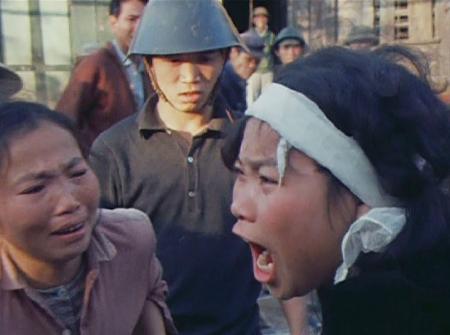Vietnam War: A Visual Account of the Conflict
The Vietnam War, a protracted and deeply divisive conflict, continues to resonate in global history. Beyond the political rhetoric and statistical analyses, lies a powerful visual narrative – a collection of photographs, film footage, and art that captures the brutality, the human cost, and the lasting impact of this devastating war. This article delves into this visual record, offering a glimpse into the experiences of those who lived through it.
The Power of Imagery: Understanding the Vietnam War Through Photographs
Photographs from the Vietnam War hold a unique power. They transcend language barriers, conveying the raw emotion and harsh realities of the conflict with unparalleled immediacy. Iconic images, such as those depicting the execution of a Viet Cong suspect by a South Vietnamese general (the Saigon Execution) or the napalm attack on Kim Phuc, remain etched in the global consciousness, forcing us to confront the horrors of war.
Key Photographic Themes:
- The brutality of combat: Images showcasing the intensity of fighting, the destruction of villages, and the sheer devastation inflicted by weaponry.
- The suffering of civilians: Photos capturing the displacement, hunger, and trauma experienced by Vietnamese civilians caught in the crossfire.
- The American soldier's experience: Images portraying the daily life, the psychological toll, and the emotional burden carried by American troops deployed in Vietnam.
- Protest and anti-war sentiment: Photographs documenting the widespread anti-war movement in the United States and other countries, highlighting the global opposition to the conflict.
Finding these powerful images requires dedicated research. Resources like the , the , and various online archives dedicated to the Vietnam War offer vast collections.
Beyond Stills: Film and Documentary Evidence
Beyond still photography, film and documentary footage provide a dynamic perspective on the Vietnam War. Combat footage, often grainy and visceral, offers a firsthand account of the fighting. Documentaries, both from the time and contemporary productions, provide crucial context, exploring different viewpoints and analyzing the broader geopolitical implications.
Notable Film and Documentary Resources:
- "Hearts and Minds" (1974): A critically acclaimed documentary that offers a powerful anti-war perspective.
- "The Fog of War" (2003): An interview-based documentary featuring Robert McNamara, former US Secretary of Defense, reflecting on his role in the war.
- Archival footage from news organizations: Major news outlets like CBS, NBC, and ABC have vast archives of Vietnam War footage available online and in their libraries.
These visual resources are essential for understanding the war's complexities. They offer a more nuanced understanding than simple narratives often found in textbooks.
Art as a Reflection of the Vietnam War
The Vietnam War also inspired a wealth of artistic expression, reflecting the diverse perspectives and emotional responses to the conflict. Paintings, sculptures, and literature offer powerful interpretations of the war's impact on both soldiers and civilians.
Artistic Representations:
- Photojournalism: The work of photographers like Eddie Adams and Nick Ut profoundly shaped public perception of the war.
- War paintings: Artists often depicted the psychological trauma experienced by veterans and the destruction wrought upon the Vietnamese landscape.
- Literature: Books such as Tim O'Brien's "The Things They Carried" and Philip Caputo's "A Rumor of War" offer powerful first-hand accounts and reflections on the war's lasting impact.
Conclusion: A Visual Legacy
The visual record of the Vietnam War remains a powerful testament to the human cost of conflict. By exploring these photographic, filmic, and artistic representations, we gain a deeper understanding of this complex historical event, fostering empathy and promoting critical reflection on the consequences of war. Further research into these resources is encouraged to develop a more comprehensive and informed perspective on this pivotal moment in history.
Call to Action: Explore the resources mentioned above and delve deeper into the visual history of the Vietnam War. Share your findings and contribute to a more complete understanding of this significant conflict.
